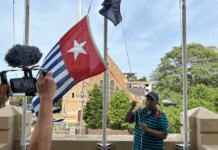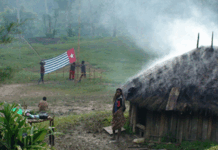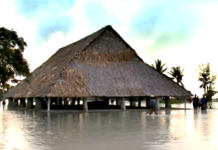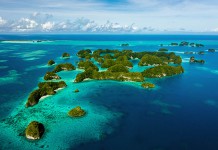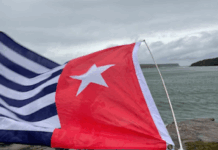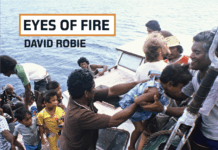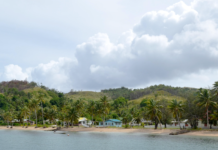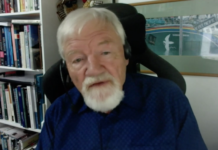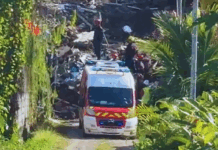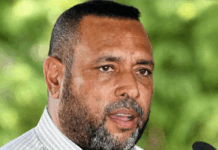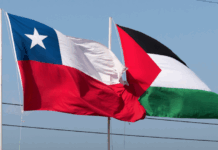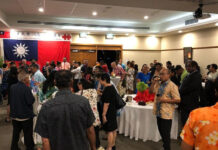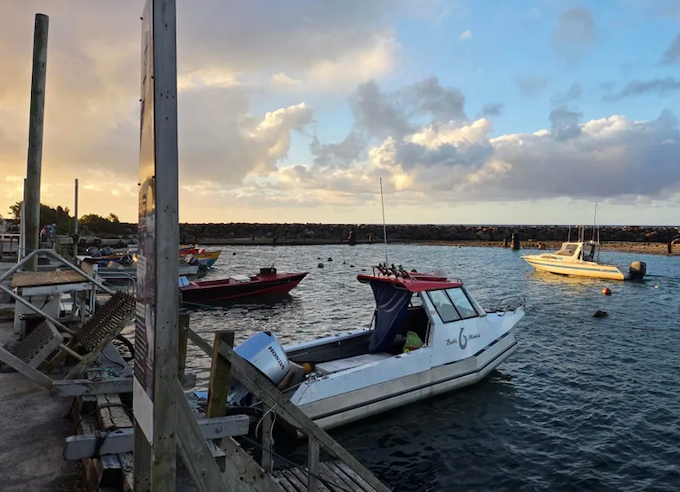
By Kaya Selby, RNZ Pacific journalist
Pacific countries have emerged relatively unscathed from a restless night punctuated by tsunami warning sirens.
The tsunami waves, caused by a massive 8.8-magnitude earthquake off the coast of Russia, have now rolled on southeastward toward South America.
According to the US Geological Survey, there have been around 80 aftershocks of magnitude 5 or higher around the area, and there is a 59 percent chance of a magnitude 7 or higher shock within the next week.
“It is most likely that 0 to 5 of these will occur,” it stated.

The Guardian reported that a 6.4-magnitude quake struck around 320 km southwest of the epicenter yesterday about 11am local time (ET).
As such, while there are no longer any formal warnings or advisory notices in the Pacific, the threat of tsunami waves remains.
Metservice said that waves as high as 3 metres were still possible along some coasts of the northwestern Hawai’ian islands.
Waves between 1 and 3 metres tall were possible along the rest of Hawai’i, as well as as French Polynesia, Kiribati, Samoa and the Solomon Islands.
Assessing the damage
In Fiji, an advisory was put in place until 10:15pm local time, though the National Disaster Risk Management Office (NDMO) reminded citizens to remain alert and continue to follow official updates.
The office said people should take this as an opportunity to update their family emergency plans and evacuation routes.
The NDMO also called on citizens to refrain from spreading false or unverified information in the wake of the cancellation.
Advisory notices were cancelled in the early hours of the morning across Vanuatu, Papua New Guinea, the Solomon Islands, French Polynesia and the American Territories. Samoa was the last to rescind theirs, at around 4am local time.
No damage or major incidents have been reported.
In the Cook Islands, the Meteorological Service warned residents to anchor their boats and tie down their washing lines.
“A big boss high-pressure system chilling way down southwest is flexing hard — sending savage southerly swells and grumpy southeast winds across the group like it owns the reef,” it said.
“A sassy low-pressure trough is making a dramatic entrance tomorrow, rolling in with clouds, showers, and random thunderclaps like it’s auditioning for a Cook Islands soap opera.”
Evacuation order
In Hawai’i, an evacuation was ordered after 12pm local time along the coast of Oahu, including in parts of Honolulu, before waves began to arrive after 7pm.
As local media reported, intense traffic jams formed across Oahu as authorities evacuated people in coastal communities, and a sense of panic stirred.
Lauren Vinnel, an emergency management specialist at Massey University, told RNZ Pacific that the ideal scenario would have been for people to leave on foot.
“We know that this is where public education and practising tsunami evacuation is really important,” she said.
“We know that if people have identified their evacuation route and have practised it, it’s much easier for them to calmly and safely evacuate when a real event does occur.”
The advisory notice was lifted across Hawai’i at 8:58am local time.
Tonga’s tsunami trauma
Meanwhile, tsunami sirens sounded on and off overnight in Tonga until authorities cancelled the warning for the kingdom at around midnight local time.
Siaosi Sovaleni, Prime Minister of Tonga, during the 2022 volcano eruption and subsequent tsunami, said he was pleased the country’s emergency alert systems were working.
“The population is better informed this time around than the last time. I think it was much more scary [in 2022] . . . nobody knew what’s happening. The communication was down.”
‘We have to be prepared’
Vinnel said that she was satisfied overall with how Aotearoa responded.
“Obviously, it’s not ideal that initially we didn’t think there was a tsunami threat based on the initial assessment of the magnitude of the earthquake. But these things do happen. I’m not sure that there was anything that could have been done differently.”
John Townend, a geophysics professor at Victoria University of Wellington, told RNZ Pacific that these happen frequently around the world,”but one of this size doesn’t really happen more often than about once every decade.”
The last time an earthquake surpassed the magnitude 8 level was the 2011 Tōhoku disaster in Japan, which clocked out at 9.1.
But Townend said that the characteristics of the “subduction zone earthquake,” were largely in line with expectations for it’s kind, a “subduction zone earthquake”.
“They have happened repeatedly in the past along this portion of the Kamchatka Peninsula . . . these things happen in this part of the world.
“In a New Zealand context, this earthquake was about one magnitude unit bigger than the Kaikoura earthquake and it released about 30 times more energy.”
This article is republished under a community partnership agreement with RNZ.



